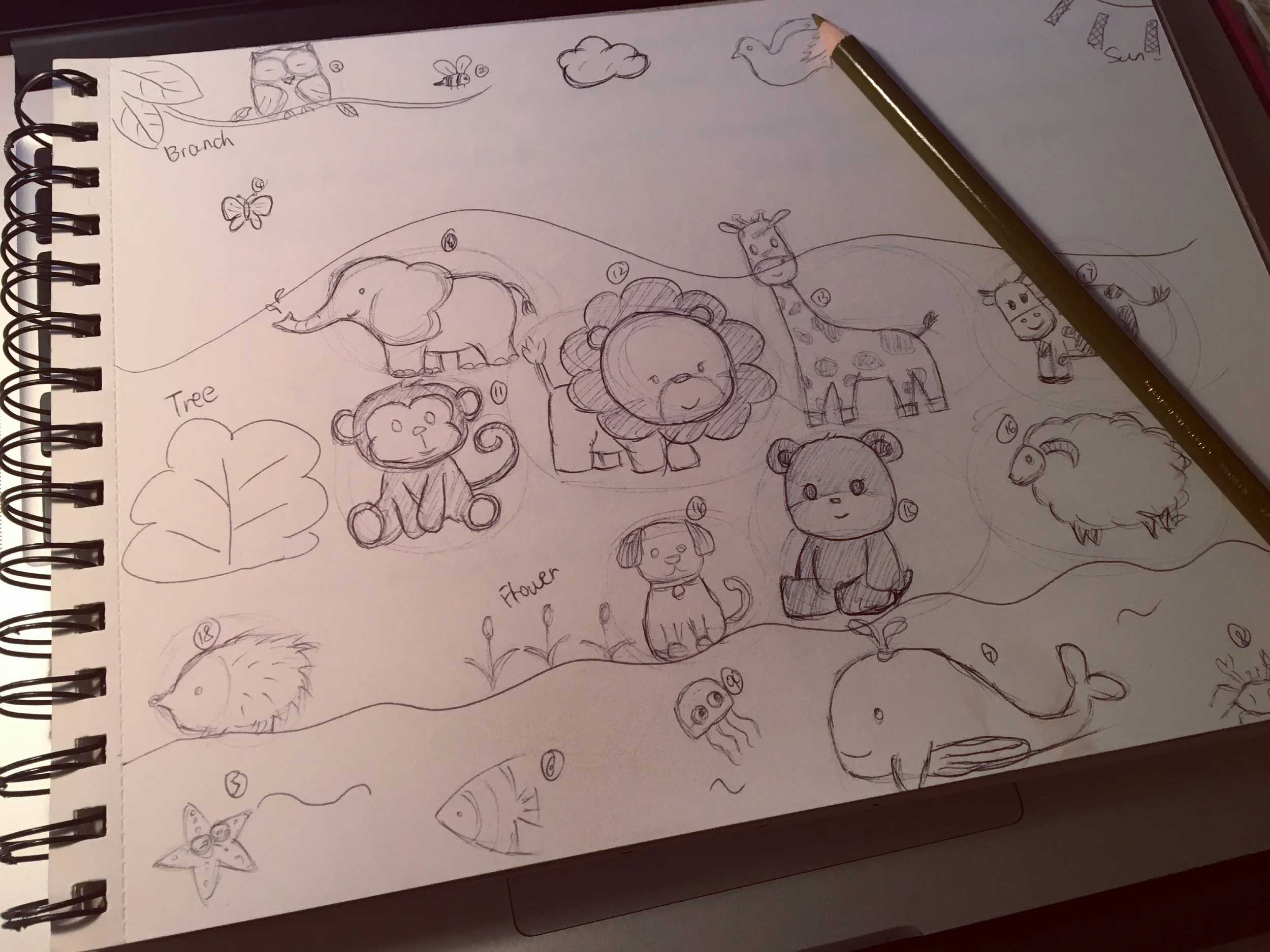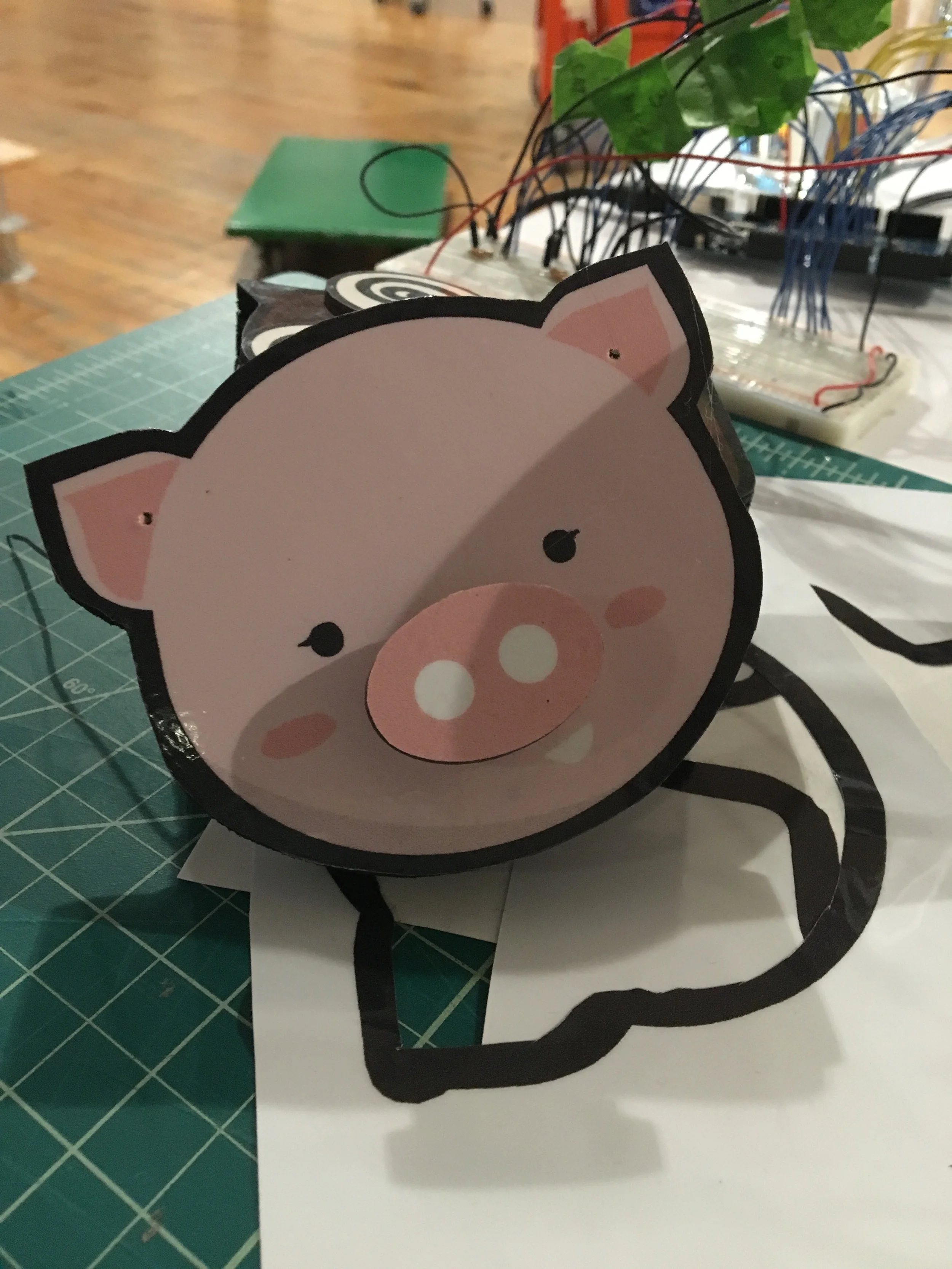ANIMAL WORLD
An interactive sensory experience for children with hearing impairment
Sep 2015 -- Dec 2015
INTROduCtion
Animal World is an electronic board experience for children with hearing impairments to be exposed to all types of sensory integration. It's a new type of interactive sensory wall that combines cognitive exercises with visual, haptic, and auditory feedback. This sensory wall is going to be donated to Strivright School in Brooklyn, NY.
Design Process
Design Challenge
In 14 weeks, we work closely with Strivright School and create a Sensory Room Experience for their students. Strivright is an Auditory Oral School for children from 3-5 years old with hearing impairment. Students from different background (Occupational Therapy and Interactive Design) work as a team to solve the problem.
USER Research
Target School:
Strivright (Auditory Oral School of New York)
Population:
3-5 Year old with hearing impairment
Challenge:
Customize senses integration experience for students in Strivright School.
Need:
Since children love playing with new sensory toys, the school need innovative sensory equipment for their new sensory room
Field research
We went to Brooklyn Children's Museum. It has a sensory room where children with special needs can engage and explore their senses. We talked to the staff and learnt how the sensory room works and how the staff working there engage the children.
Interview
We went to Strivright School, we observed how faculty lead students to have sensory integration therapy, from simple communication to sensory gym exercise. After that we interviewed with the teachers, and we are especially interested about their need and thought about working with NYU student to create new sensory experience .
According to the interview, we learnt that faculty and children in Strivright are happy to embrace new sensory equipment, and teachers love to apply new technology into their sensory integration therapy. Also, the two new sensory rooms are under construction. One is for active sensory response and the other one is for passive sensory response.
Sensory Integration Theory Research
Pitch solution
After brainstorming, we focus on active sensory behavioral response, creating an interactive Sensory Wall. It's a combination of fun and occupation therapy in order to gives sensory opportunities for children to respond appropriately to their environment.
Why sensory wall?
Primary reason:
- Age appropriate
- Integrating different senses- Light, Sound, Touch- Compensate for hearing loss
Secondary reason:
- Core strength
- Cognition
- Shoulder Stability and Strength
- Fine motor
Purpose:
- Provide sensory input
- Explore a variety of sensory stimulus to meet their threshold
- Core strength –Prone–Cushion- Peanut Ball
- Improve shoulder stability and strength
Iterative design
Prototyping
We created small canvas with painted background, and we assembled two electronic pieces (in shapes of star, bear and heart) with colorful LED and vibration sensor in it. When kids put the small piece on certain spots, the LED lights up and it vibrants.
This is the first attempt to make connection with movement and visual/ tactile sensory integration. We used magnetic spray paint to make the canvas magnetic. And we used copper tape to connect the circuit between canvas and small pieces.
User Testing
We spent a night doing user test with 5 children from 4-10. They like playing with small pieces and combine them together to create stories. They wonder if there are more animals in different environment. They wish the small pieces could be more fun
- Durable & Pretty : It's a project for children, safety and durable issue need to be taken into consideration. Also, visually appealing can attract kids' attention.
- More sensory feedback : Add sound and more sensory feedback and make the experience more engaging and fun.
- Create a theme : We found that children love to use different components on the wall to create stories. A theme for the wall would free their imagination .
- Make it bigger : We want the project to be real and we'd love to send it to the school. So we have to make the 'wall' as a wall so that it could be functional.
Things need to be improved:
Final pitch
After user testing with kids and talking to the occupation therapist in the school, we came with a way to solve the durable problem-- using real magnetic metal and customized circuit board.
How it Works:
There are two layers of metal. The first layer, with graphic poster background and small holes, can keep the small animal pieces attached on the wall. And the second layer is designed for connecting the animals to power and ground to complete the circuit.
The board is made of magnetic materials, and the individual animals have magnets on the back of them. Users can put animals anywhere on the board, but when they put them in the slots (noticeable with bare metal), it closes an electrical circuit and the animals do different things; light up, vibrate, make sounds, and have motors spin, or a combination of them.
Sketch & Mockup
We picked animal world as the theme of the board. Because kids love animals and it's educating to teach them different kinds of animals. Also, putting animals in different environments can train their ability to do imagination and storytelling.


Animals and Background Design (Illustrator & Vectorworks & CNC)
Customized Circuit Board
Assembling the wood frame
Sanding the wood and Painting
Finish the product
EXHIBIT IN ITP WINTER SHOW
Future Iteration
- Add mini speaker inside individual animal
- Redo some fabrication parts, using solid wood instead of plywood (decrease the chance to hurt kids' hands)
- Add more interactive components
- Improve durability
This project will eventually move to the Strivright school. We are iterating and securing components so they’ll be ready for the wear-and-tear from many children, and will send it off to the school in Spring 2016.



























